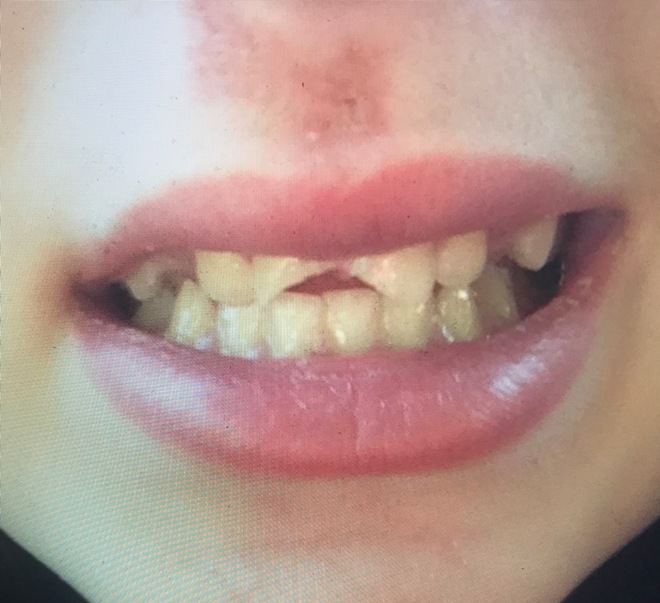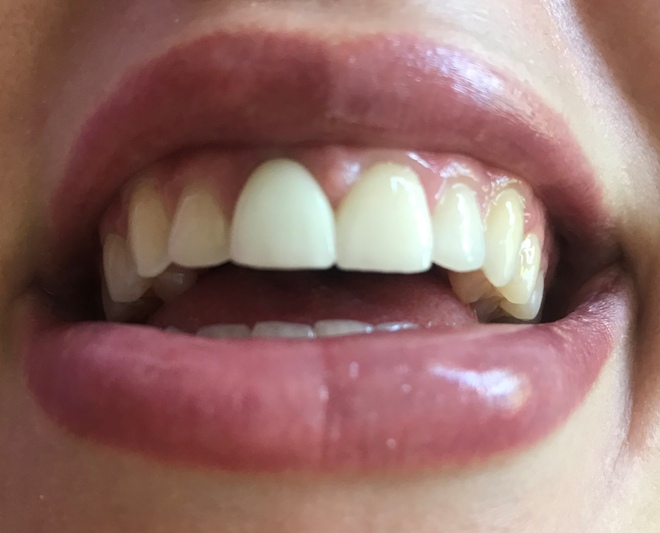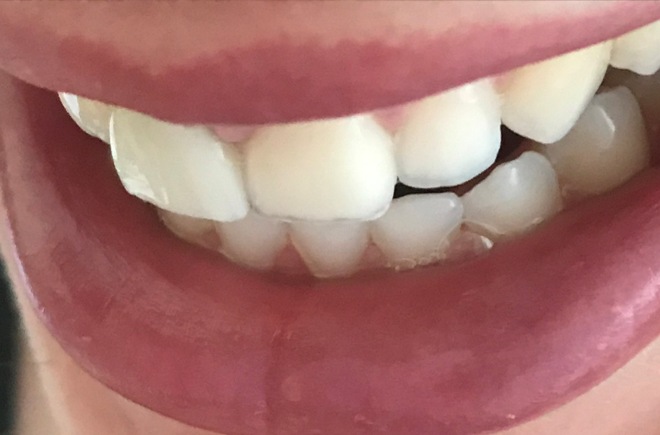Hi, Dr. Hall
I hope you can help answer my question. I recently got veneers and asked for white white, the Hollywood smile. As far as size and shape, he got that perfect, but my teeth are only one maybe 2 shades whiter than what I had before getting veneers. What I wanted was either a bl2 or bl3. I know this is considered fake looking, but this is what I wanted. I even showed pictures at my appointment. At the time, I did not know the names of the shades. In my appointment, after I showed him pictures of the color I wanted, he told his associate, do an A1. I assumed A1 was that bright “fake” white. He never showed me a color chart.
I now have had them for 5 days and am so unhappy and depressed as I feel I wasted money. My teeth were in good condition beforehand, straight and a tiny bit yellow, more an off white. I expressed my concerns with the dentist, and now he is saying that the color he actually submitted was an bl1 and has no idea where the A1 came from. I am 100 percent certain he said A1 at my appointment to his associate because I have never heard that before and I didn’t know any shade names. Could he be saying this because he does not want to redo them for me? I would hate to think he could be lying. I can guarantee I do not have a bl1 color. They look a dull natural white, very close to what I now see an A1 is. He is saying that my veneers could look darker than what I wanted because of my teeth underneath, but I whitened them at the dentist and again at home and they were not that bad beforehand. Even if they were black, I think a bl1 would have made my teeth look more white than what they are now. I want to add the veneers I had were the no preparation veneers. Please help! Thank you!
Mary from Studio City, California
We thank our advertisers who help fund this site.
Mary,
I think you have this figured out—your dentist just doesn’t want to re-do the veneers. You could call him on his mistake by asking him to photocopy the work order he gave the dental laboratory and give that to you. If he alters it before copying it that would compound the mistake and give you tangible evidence that he has tried to deceive you, so I’m pretty sure he’ll refuse to give you this if you ask. And blaming it on the color of the teeth underneath is just admitting that he didn’t know what he was doing. A competent cosmetic dentist and dental laboratory will always take into account the shade of the underlying teeth and if the veneers are to be dramatically whiter than the underlying teeth, some opaquer is built into them so that they get the correct final result.
I am impressed that you’ve done your research and know all these names of the shades from dental shade guides. You now apparently know more about shade guides than your dentist did when he started your case!
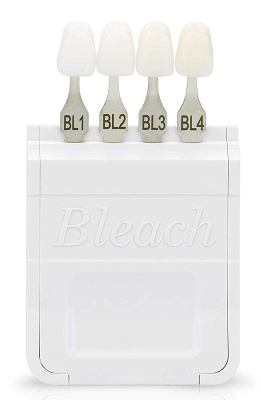
Here’s a little background on this tooth shade matter. Dentists, in dental school, are schooled in what is called the classical shade guide, where the whitest shades are A1 and B1. So if you were to ask one of these dentists what is the whitest shade of teeth, they would tell you either A1 or B1.
When tooth bleaching became popular in the 90s, shade guide manufacturers realized that they had to expand the shade guide to incorporate the new bleached teeth shades. Ivoclar, the maker of the second-most popular shade guide, was the first to respond and they invented the bleached shades 010, 020, 030, and 040. Later the names of these shades were changed to bl1, bl2, bl3, and bl4. That’s the bleached shade guide that you are referring to.
Vita, the manufacturer of the most popular dental shade guide, was a little slower to respond, but they finally came out with bleached shades M1, M2, and M3. Today, many cosmetic dentists use a combination shade guide made of the traditional Vita shades A1 to D4, with the Ivoclar bleached sides bl1 to bl4 tacked on.
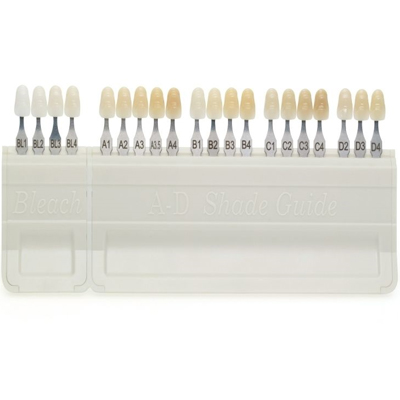
In my practice, we would always carefully discuss this issue of the final shade of the teeth that the patient wanted. Most patients wanted a natural white, but there were a number of them who wanted what you wanted. Some cosmetic dentists call this a “Hollywood white” color. In my office we called it “ballistic white.” Before they came out with the bleached teeth shade guides, we would communicate this to the laboratory as a B-zero color, and we made sure the laboratory understood what we were talking about.
Your dentist made a fundamental mistake in your case, and needs to make this right to you. There’s no point arguing about how it happened. The point is that you didn’t get what you asked for in a Hollywood white smile.
A fundamental principle of smile makeover dentistry is that the case is a failure if the patient doesn’t love how it looks. Every ethical cosmetic dentist I know would re-do the case if they missed the shade like your dentist did, leaving the patient unhappy with how the case looks. I think you just need to get tough with him, not accept any excuses, and I believe that he will relent and re-do them for you. Since, as you said, he got the shape right, I’m assuming that he is competent in cosmetic dentistry and you don’t need to switch dentists to get this done right.
But if you keep getting resistance, get back to me, and I will help line you up with a dentist for a second opinion. A call from another dentist will usually convince a reluctant dentist to rectify a mistake like this.
Good luck,
Dr. Hall
Do you have a comment or anything else to add? We’d love to hear from you. Enter your comment below.
Click here to ask Dr. Hall a question of your own.
About David A. Hall
Dr. David A. Hall was one of the first 40 accredited cosmetic dentists in the world. He practiced cosmetic dentistry in Iowa, and in 1990 earned his accreditation with the American Academy of Cosmetic Dentistry. He is now president of Infinity Dental Web, a company in Mesa, Arizona that does advanced internet marketing for dentists.

